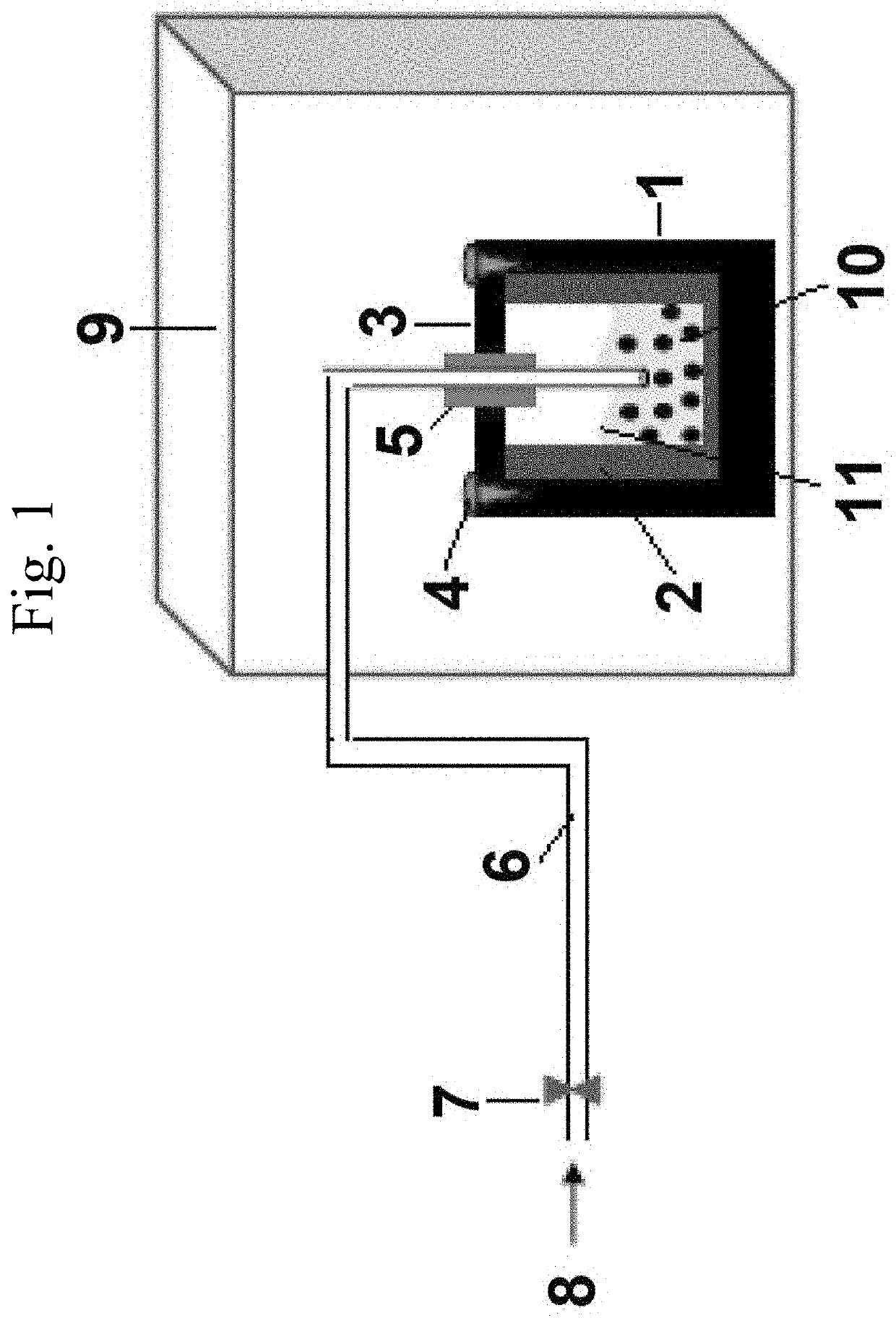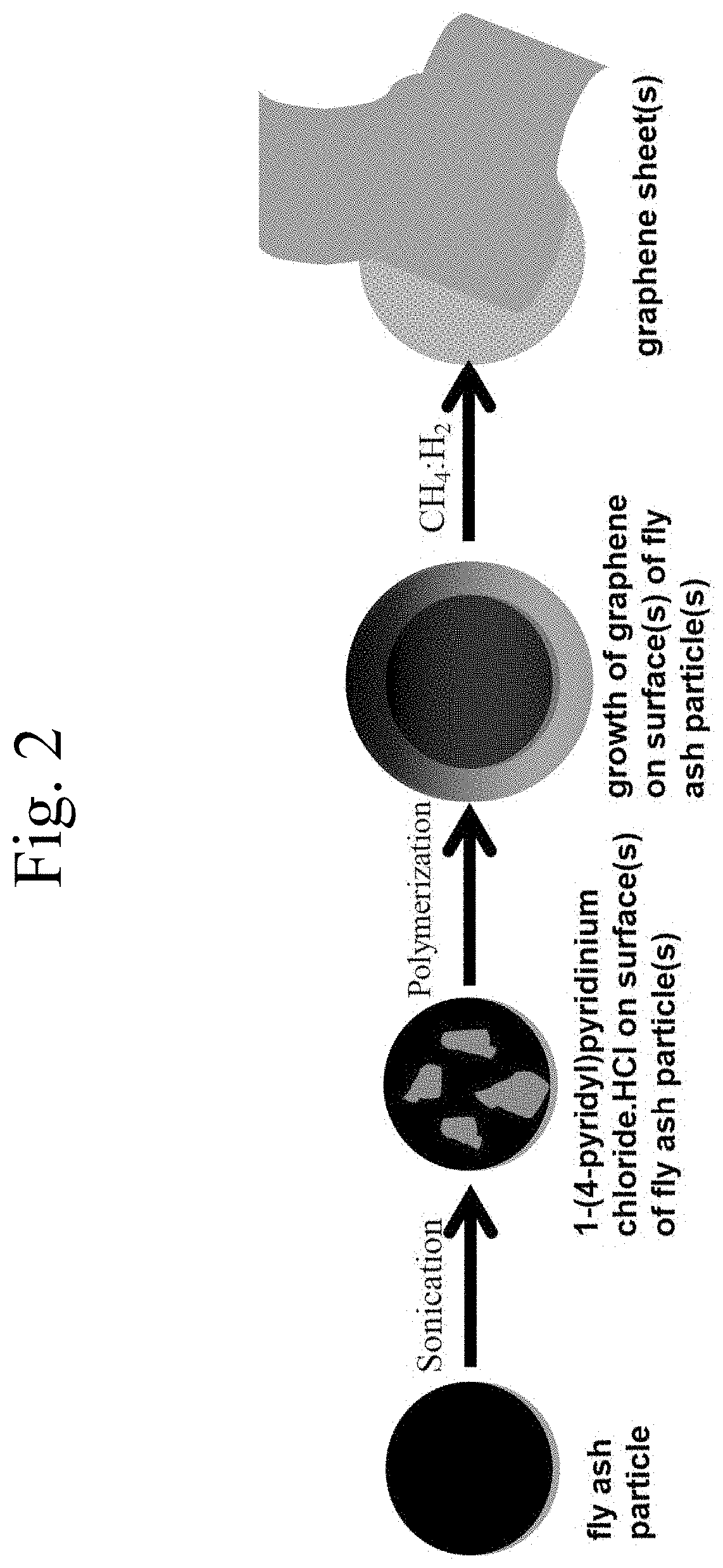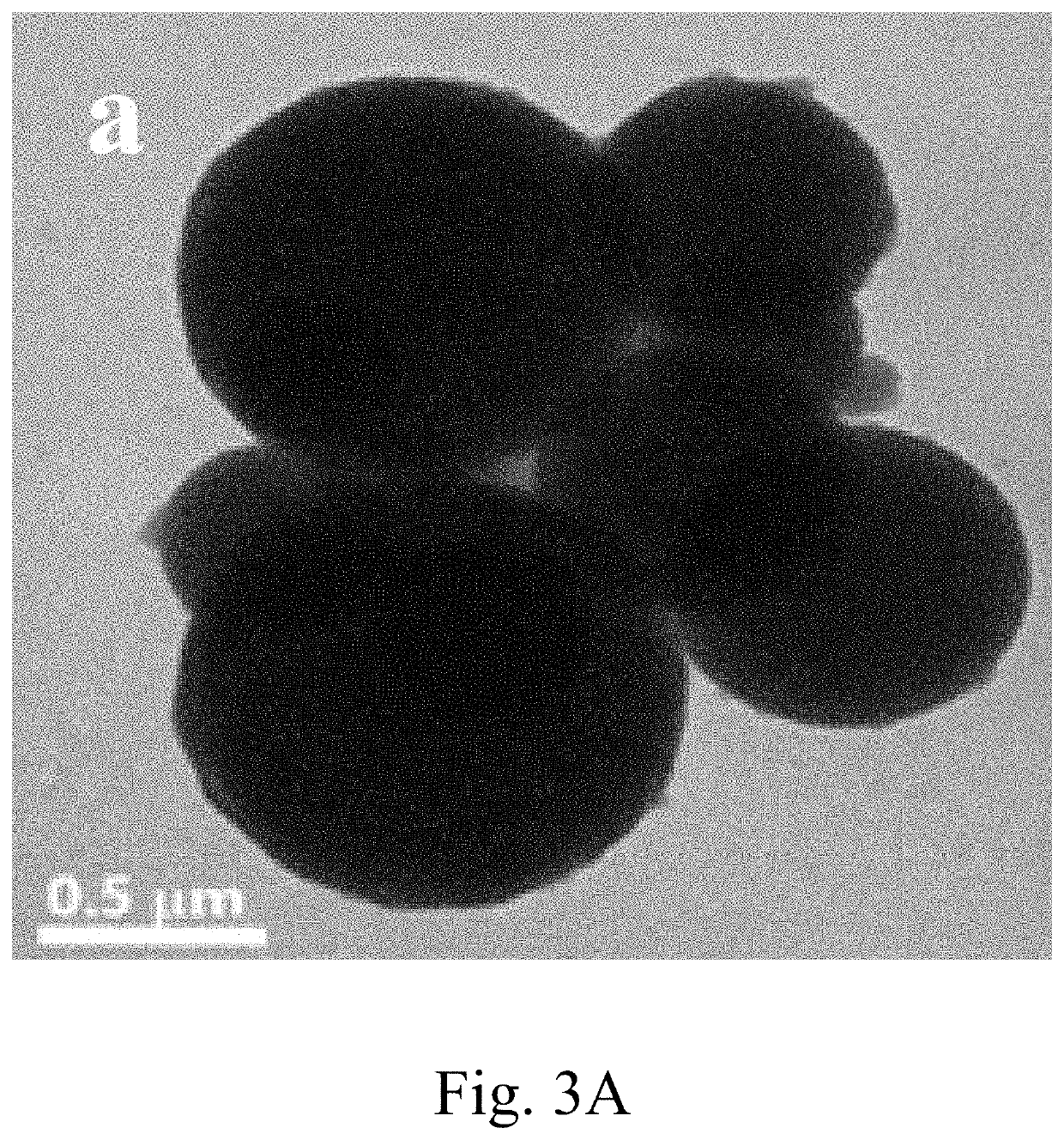Process for forming graphene-coated particles
- Summary
- Abstract
- Description
- Claims
- Application Information
AI Technical Summary
Benefits of technology
Problems solved by technology
Method used
Image
Examples
example 1
[0059]Preparation of Graphene
[0060]About 100 mg of fly ash and 200 mg of 1-(4-pyridyl)pyridinium chloride HCl were added to a glass beaker containing 50 mL of ethanol to give a mixture. The mixture was sonicated for 30 minutes at 60° C., then 150 mg of poly(4-vinylpyridinium chlorochromate) were added and the whole mixture was stirred for 40 minutes at room temperature (T ˜22° C.). After stirring for 40 minutes, the whole mixture was transferred to the exemplary reactor system depicted in FIG. 1. The system sealed and the temperature was raised to 160° C. for 60 minutes. During the heated reaction, dilute methane in hydrogen gas was bubbled through the mixture with flow rate of 5:95 sccm (standard cm3 / minute) for 10 seconds as the only gasses present during the reaction. After 60 minutes at 160° C., the reaction was stopped by quenching the reactor cylinder in an ice bath at 4° C. for 10 minutes, resulting in a suspension. The suspension was collected via centrifugation at 15000 rpm...
example 2
[0061]The influence of CH4:H2 gas ratio on the growth of graphene: The experiment in Example 1 was repeated under the same conditions except that the ratio of flow rates of CH4:H2 was varied at 5:25, 5:55, 5:75 or 5:95 sccm (standard cm3 / minute), and the reaction carried out at 50° C. The Raman spectra for the graphene produced as described above at the varied flow rate ratios were measured and depicted in FIG. 4.
example 3
[0062]The influence of temperature on the growth of graphene: The experiment in Example 1 was repeated under the same conditions except that the reaction was carried out at varied temperatures, i.e., 60, 85, 100, and 160° C. The Raman spectra for the graphenes produced in Example 3 at these varied temperatures were measured and are shown in FIG. 5.
[0063]Aspects of the invention provide methods for preparing graphene using fly ash in a thermal reactor. The thermal reactor may include a cylindrical tube with capacity of 80±5, 10, 15, or 25 cm3, which tube may be coated on an inside wall with a fluoropolymer film, such as PTFE, and the reactor may include a cover including one or more orifices to allow one or more silica or silicon tubes to pass through the orifice such that a gas may flow into the reaction chamber and / or through the solvent containing the reactants. The thermal reactor located in an electric oven, a gas-fired oven a coal-fired oven, a heating mantle, a heat exchange f...
PUM
 Login to View More
Login to View More Abstract
Description
Claims
Application Information
 Login to View More
Login to View More - R&D
- Intellectual Property
- Life Sciences
- Materials
- Tech Scout
- Unparalleled Data Quality
- Higher Quality Content
- 60% Fewer Hallucinations
Browse by: Latest US Patents, China's latest patents, Technical Efficacy Thesaurus, Application Domain, Technology Topic, Popular Technical Reports.
© 2025 PatSnap. All rights reserved.Legal|Privacy policy|Modern Slavery Act Transparency Statement|Sitemap|About US| Contact US: help@patsnap.com



